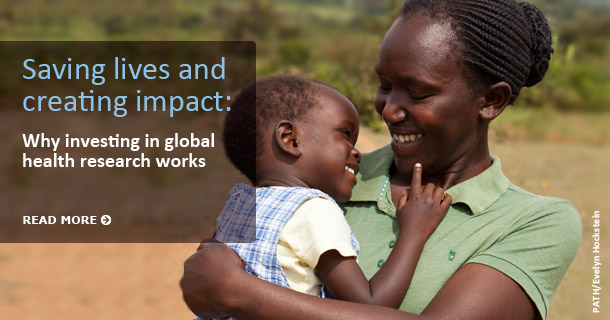Ashley BennettGHTC
Ashley Bennett is a Policy and Advocacy Officer at GHTC.
Did you know that Americans spend more money on ice cream in three weeks than the US Government spends on global health research and development (R&D) in a year? And despite this relatively modest investment in the creation of new global health tools, the United States is the worldwide leader in R&D for neglected diseases.
When we at the GHTC tell US policymakers the story of how global health R&D has revolutionized people’s lives around the world, we highlight the prominent role that the US Government plays in funding and supporting the development of new global health tools.
We’ve always believed that US leads the world in investment in global health R&D, and that this comparatively small investment has paid off many times over in lives and dollars saved.
We’ve seen the effectiveness of US-funded technologies like the polio vaccine, oral rehydration solution, and HIV and AIDS drugs. We’ve known that tools in the pipeline would have similar game-changing effects.
And now we have the evidence to prove it.
A new report, released today by the GHTC and Policy Cures, provides important confirmation that the US is the largest global health R&D funder in the world, investing $12.7 billion over the last decade.

In fact, the US government in the last decade more than doubled its annual commitment to developing new global health products, from $685 million in 2000 to $1.4 billion in 2010. These investments represent just 0.01 percent of US gross domestic product.
Our report confirms the strong leadership role the US has played in the global health R&D landscape, and also includes new information on spending and support by key US federal agencies—the Centers for Disease Control and Prevention, Department of Defense, US Food and Drug Administration, National Institutes of Health, and US Agency for International Development.
New information also details the public health impact of products already on the market, and new health and economic projections detail the possible impact for health tools still in development. There is an exciting pipeline of 365 new vaccines, drugs, diagnostic, and other products for global health, and the US Government is supporting 200 of them.
These are just a few examples of the immense impact of global health R&D, and the incredible benefits it will continue to have if robust support continues. The US is not alone in this effort—many governments around the globe, philanthropic foundations, and private industry partners provide large amounts of funding, technical expertise, and key intellectual property to develop new global health tools. The global health R&D landscape would not be the same without these important allies.
While the success of US investment in global health R&D is exceptional, the report makes clear that sustained and increased US support is essential to ensuring that the potential of global health research is not lost. The report provides recommendations for how the US Government can maximize its investments in new global health products. The recommendations are:
With all of the amazing results of global health R&D we have seen—and with this new evidence that global health R&D is a worthwhile, cost-effective investment—it would be a shame to retreat now. With the US leadership role comes the responsibility to continue pushing the boundaries of science and leading the world in combating global health diseases.